The best emergency blankets, bags and shelters: lightweight lifesaving gear
When things go wrong on the trails, the best emergency blankets, survival bags and shelters can save lives
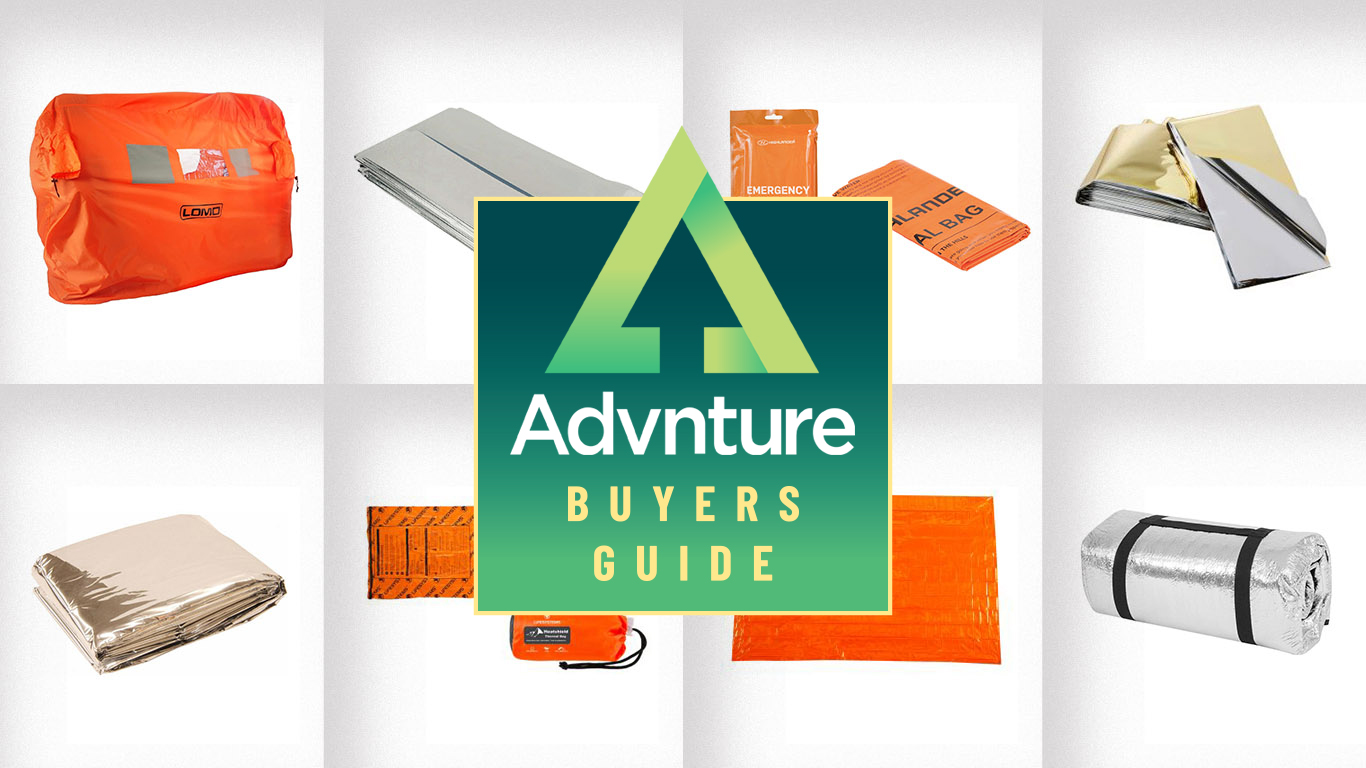
The best emergency blankets, bags and shelters are items that you hope never to have to use for their main purpose, an emergency in the mountains. However, if you're heading to the high places, they're an absolutely essential safety net and provide reassurance for both yourself and your hiking buddies.
Designed to shelter you from the elements, these bags, blankets and larger shelters can be a lifesaver in an emergency situation. They keep cold at bay, allowing for time to treat a casualty or to wait for the rescue services to arrive. You'll notice that the best emergency blankets, bags and shelters are all brightly colored, to help mountain rescue locate you in a fix. They're also designed to be lightweight and compact for easy carrying in your hiking backpack.
Our testers have taken these excellent products into challenging conditions to really put them to the test. Our favorite survival bag is the Lifesystems Heatshield Thermal Bivi Bag, while the SOL Emergency Blanket is our pick where blankets are concerned. For a larger group shelter, the Lomo Emergency Storm Shelter gets our vote. There are many reasons you need a survival shelter of this size, such as taking a lunch break in wet conditions.
The quick list
This is the quick list, a snapshot of the best emergency blankets, bags and shelters available in 2025. To delve deeper into the features and qualities of each featured product, see our more detailed reviews further down the page in this guide.
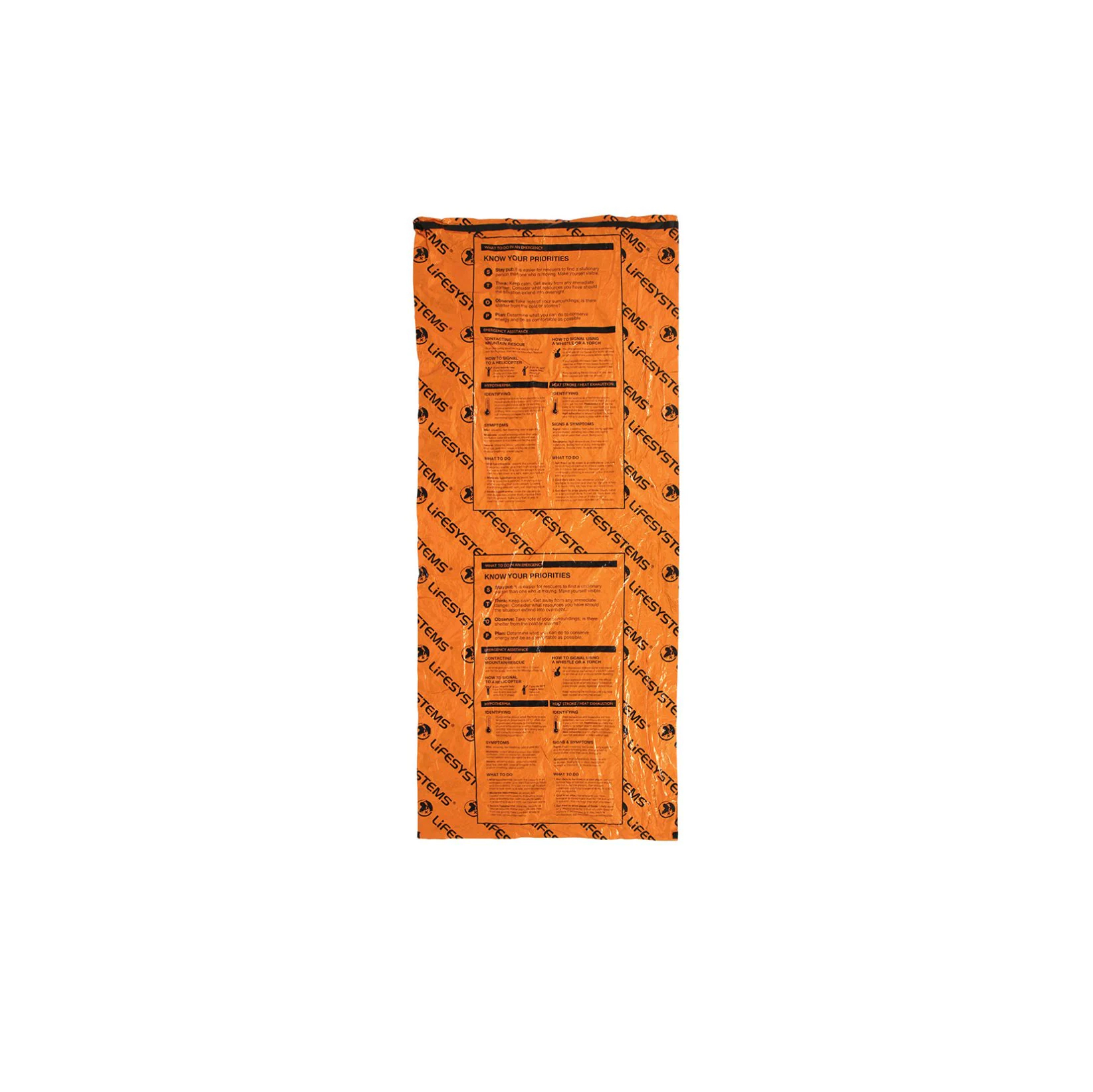
We approve of this large reusable bag that offers almost immediate and long-lasting warmth, as well as hills safety info printed on its exterior.

We like the value of this large, versatile, wind- and waterproof bag that harnesses body warmth and has multiple uses.

We very much like this versatile, waterproof and windproof single-sheet blanket with a high warmth rating.
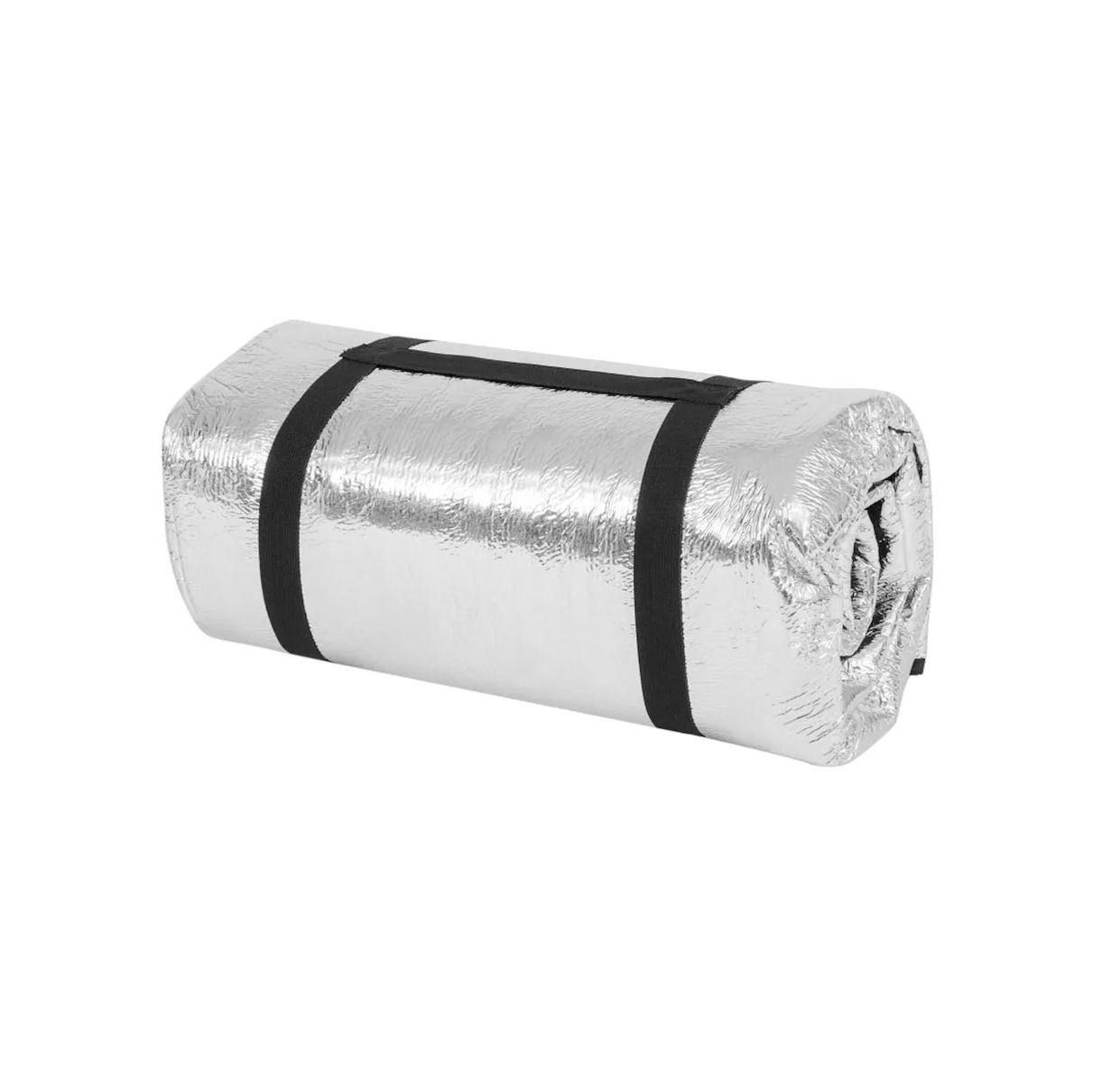
We're fans of this padded, reflective survival blanket that helps retain body heat and is larger than most.
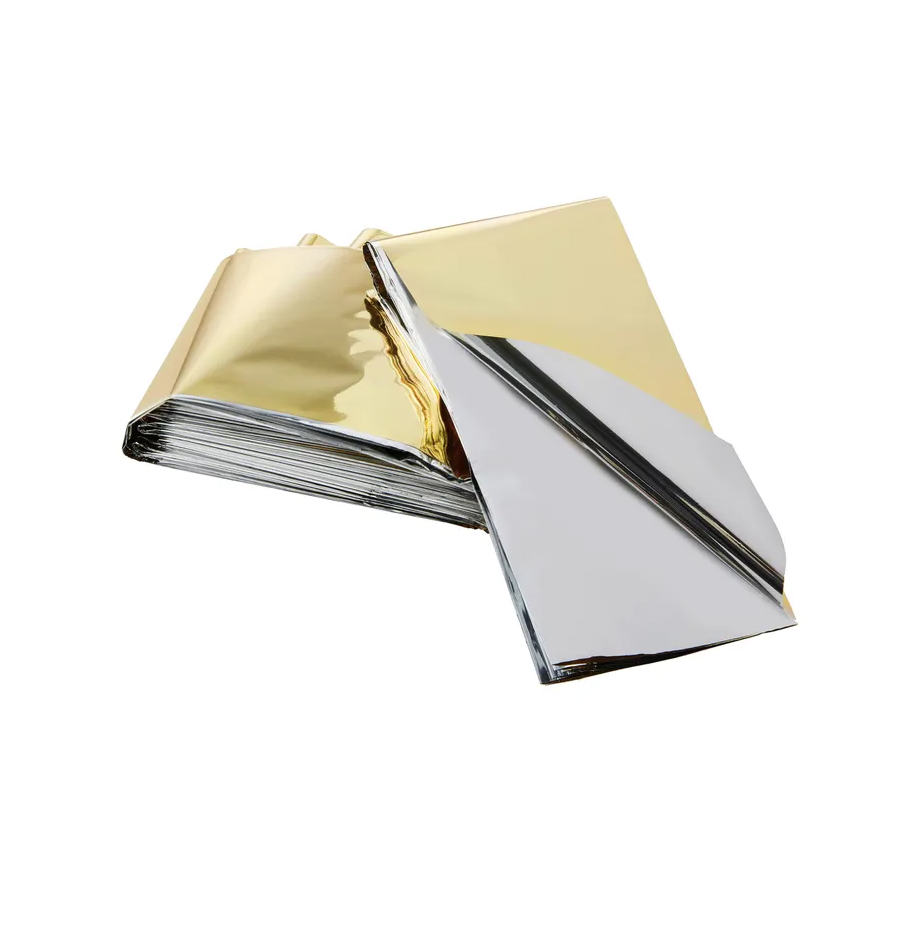
A no-frills, single-use foil blanket that only weighs 60g – particularly handy for those on a tight budget.
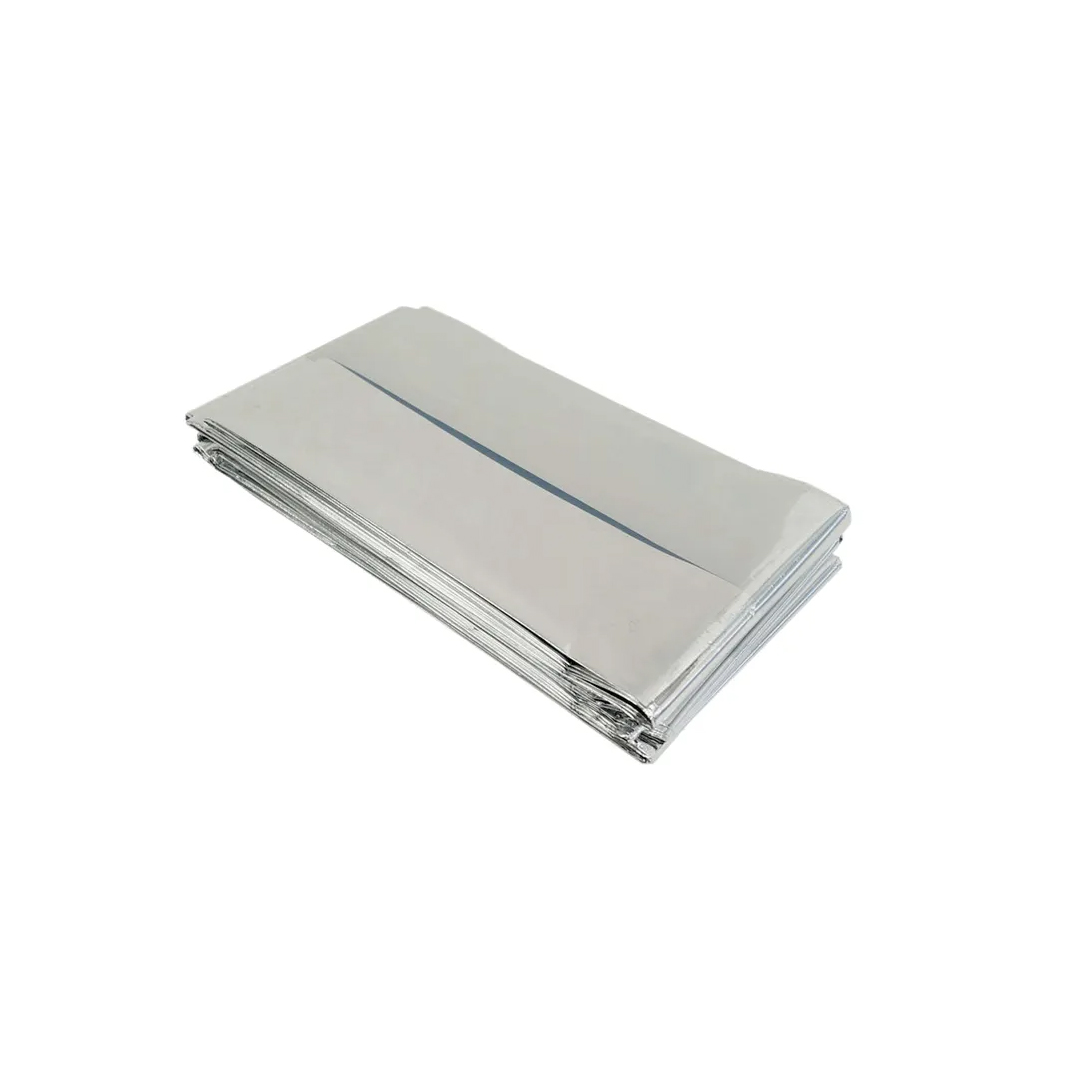
Weighing just 50g, we like the ultralight qualities of this basic, cheap, single-use foil blanket, though it's not quite as protective as some pricier versions.
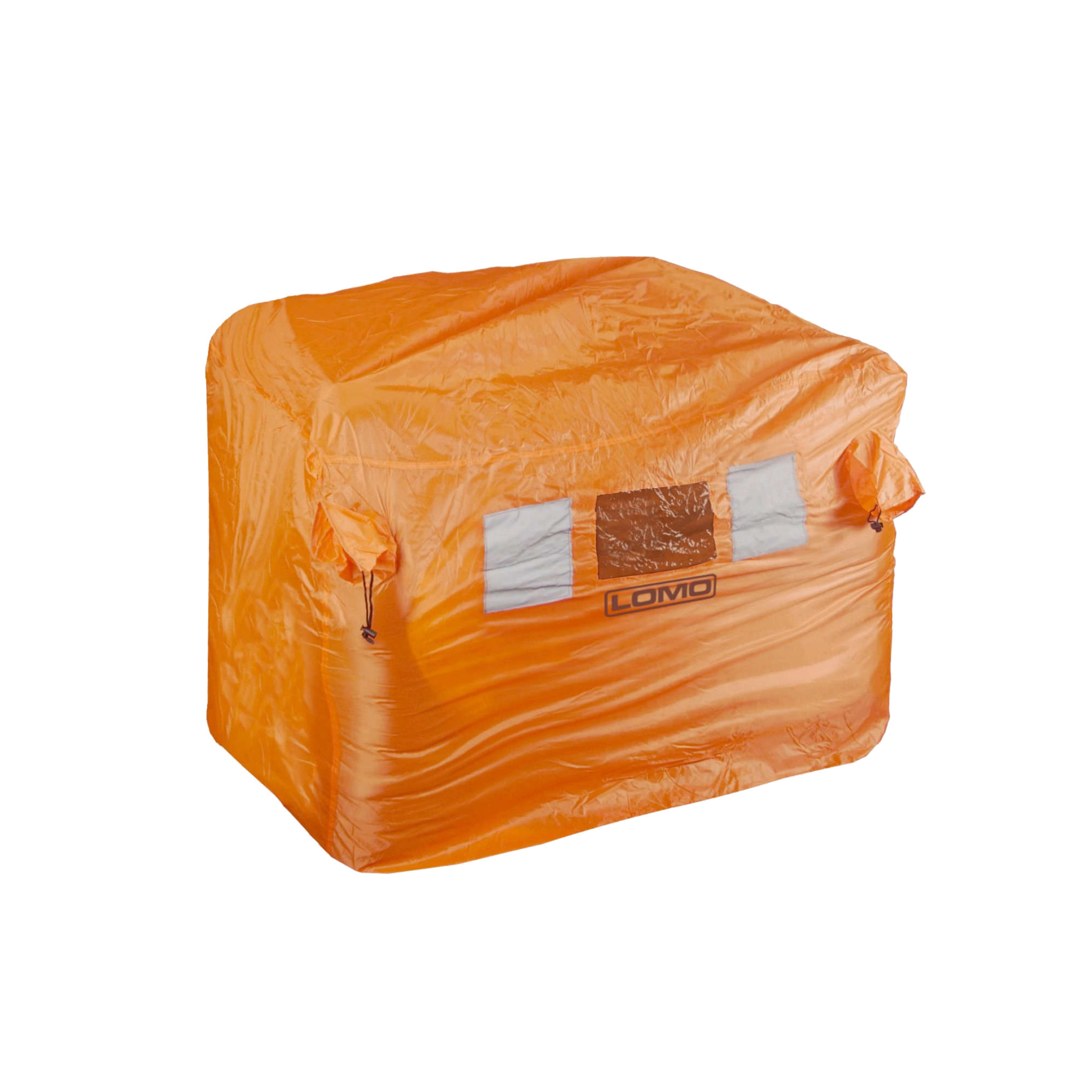
For group emergency situations, we love this larger, heavier two-person bothy bag shelter.
The best emergency blankets, bags and shelters 2025
You can trust Advnture
The best survival bag overall

Specifications
Reasons to buy
Reasons to avoid
According to our expert tester Fiona Russell, the Heatshield Thermal Bivi bag "ticks all the right boxes in terms of quality, durability and warmth". You can get inside the bag and pull it up around your shoulders and neck, which keeps the weather out. The bag is long enough even for taller people, too.
It generates heat from the body almost immediately, and remains warm as long as you stay inside. The material feels durable and it doesn’t make too much of a rustling noise. The orange outer is also radar reflective to make it easier for assistance to reach you.
The bag can be used as a general shelter, lunch-break warmer and also an emergency bivi bag should you get into trouble in the hills. It’s reusable, although you might want to wait until you get home to roll it up neatly, so it fits back into the very useful stuff bag (trying to do this on a windy mountain is frustrating).
On test there was slight build-up of condensation after a while, but this can be eased by opening up the bag for a bit. Although a little pricier than other similar products, it’s well worth the money.
Read our full Lifesystems Heatshield Thermal Bivi Bag review
The best value survival bag

2. Highlander Emergency Survival Bag
Our expert review:
Specifications
Reasons to buy
Reasons to avoid
It is surprising how hot it gets once you are inside this simple plastic bag. Within minutes, your body generates heat and, because the bag is made of plastic and it’s windproof, the warmth stays inside.
On the test, our expert review Fiona Russell found the bag was large enough to pull up to her shoulders, although she stated that "this might not be the case for very tall people". The exterior of the bag is printed with a wealth of information about hill safety, such as how to signal for help, tips on conserving water and the best way to protect yourself in an emergency situation.
The negatives of this emergency bag are the noisy rustling of the plastic. After a while, we also noticed a slight buildup of moisture inside the bag caused by body heat and condensation.
The bag is cheap to buy and can also be used to construct a temporary waterfproof shelter to guard against the wind and rain when hiking. The only issue would be the noise if it was windy, which might stop you getting to sleep. As with all such models, the bag folds up larger after use, compared to when it arrives factory packed.
The best emergency blanket overall
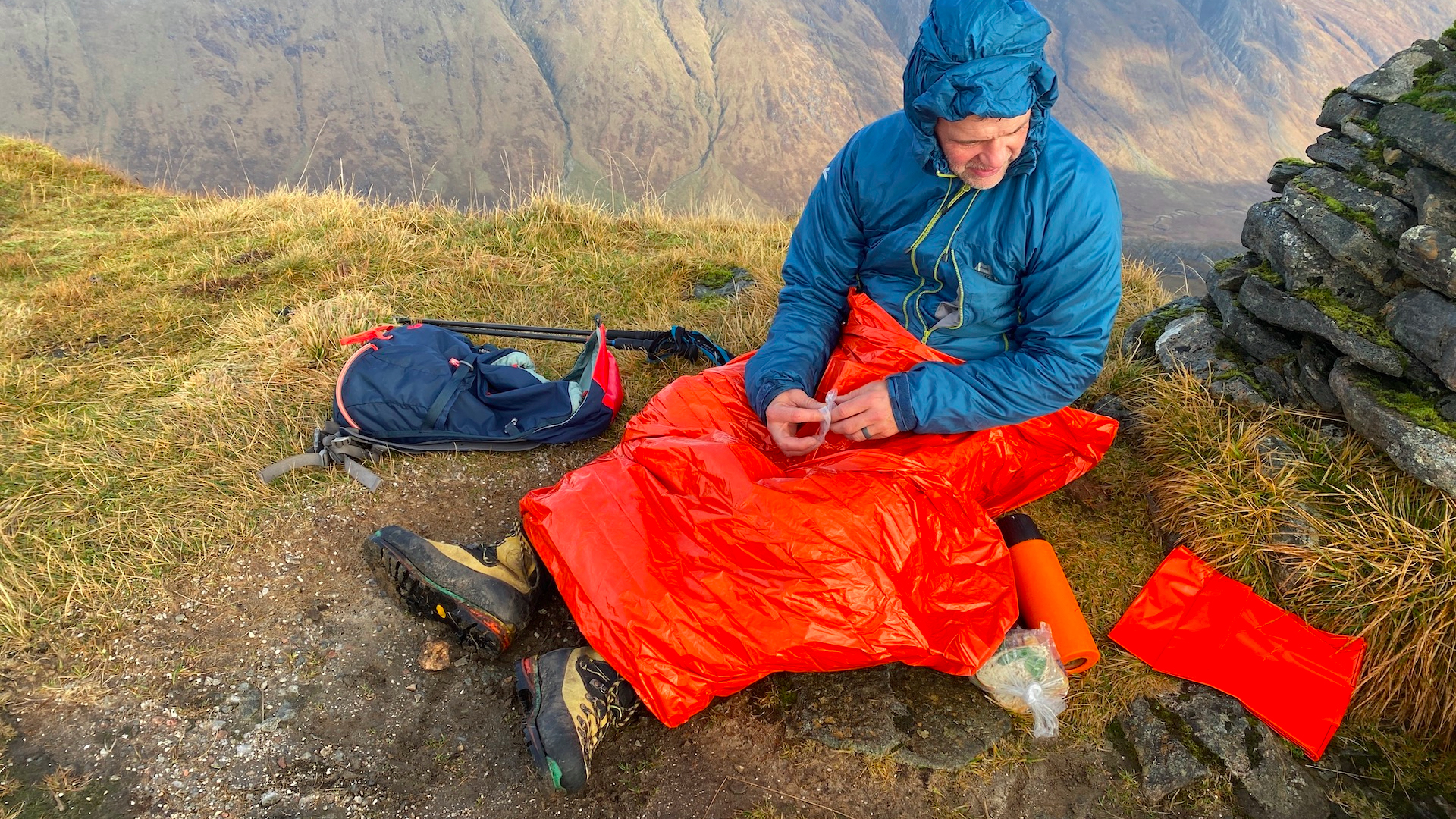
3. SOL Emergency Survival Blanket
Our expert review:
Specifications
Reasons to buy
Reasons to avoid
The SOL Emergency Survival Blanket is simple and lightweight. Tester Fiona Russell says that "It’s the sort of item you could pop into your backpack and completely forget about until you need it, if you ever do".
The foil feels durable and it is thicker than some other single-sheet blankets. Because it’s orange on one side, it can be easily seen by an emergency search parties. When wrapped around the body, the blanket does provide a good level of warmth, but the problem is that – even when wrapped tightly to the body – there are flappy gaps, especially in the wind. It is impossible to get a fully snug and warm feeling because of the air still circulating where the blanket doesn’t reach, which is why it’s better if you lie down and wrap the blanket along your full length.
The material is not as noisy as others on test, which means you could use it as an extra warming layer for camping or, potentially as a shelter, without being irritated by the sound of rustling. When folded up again, the blanket returns to a size about 50% to 100% larger than when pre-packed.
The best large emergency blanket
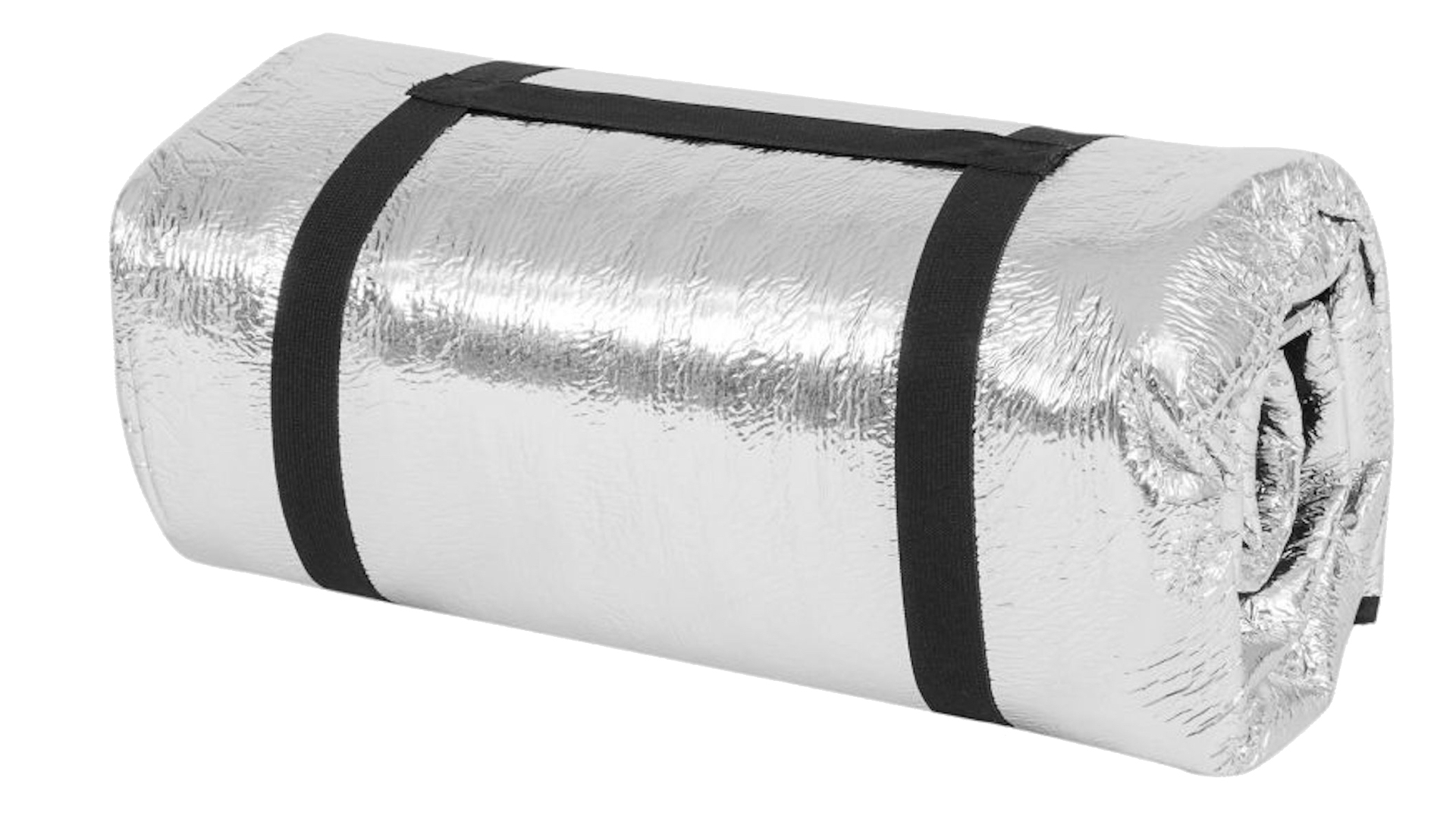
4. Highlander Thermo Survival Blanket
Our expert review:
Specifications
Reasons to buy
Reasons to avoid
"The most obvious factor with this survival blanket is the size of it" says our expert tester Fiona Russell. Although relatively lightweight, it’s bulky and takes up a lot of space in a hiking pack. However, she says: "I imagine it’s very useful for emergency services, who can spread the load of emergency and safety kit among the crews".
It’s a warming blanket, and comfortable to have wrapped around the body. It’s not very flexible – plus it’s very light and floaty – so it’s hard to gain full coverage without the wind and rain getting to the body underneath. We’re not sure it’s waterproof; it might be water-resistant at best.
The product scores three stars because it did a fairly good job of keeping us warm and it’s lightweight, but rather than taking it on the trails when hiking or biking, we’d reserve this for kayaking trips, where there is more space spare in the boat.
The best budget emergency blanket

5. Forclaz Single-Use Survival Blanket
Our expert review:
Specifications
Reasons to buy
Reasons to avoid
This no-frills blanket is sold in a clear plastic bag and doesn’t over promise – as clearly stated it is a single-use emergency blanket. The gold side is meant to capture heat so you will stay warm in the cold, while the silver side is to reflect the heat and keep you cool.
"In all honesty," says our expert tester Fiona "I didn’t notice any real difference when using either side on test, but I was on a peak in Scotland – perhaps the heat-reflecting properties of the silver side might be more apparent (and welcome) if you’re stuck out in a desert."
This is a single-sheet blanket so when you wrap it around your body there are inevitably gaps where the cold air gets in. If you are lying down and need warmth, make sure you tuck in all the edges to stop cold air getting to your body. The foil rustles noisily and the material is thinner and potentially less durable than other products on test. But it’s a cheap blanket and if you are on a budget it could be the best £2.99 you’ve spent for the life-saving potential.
The best ultralightweight emergency blanket
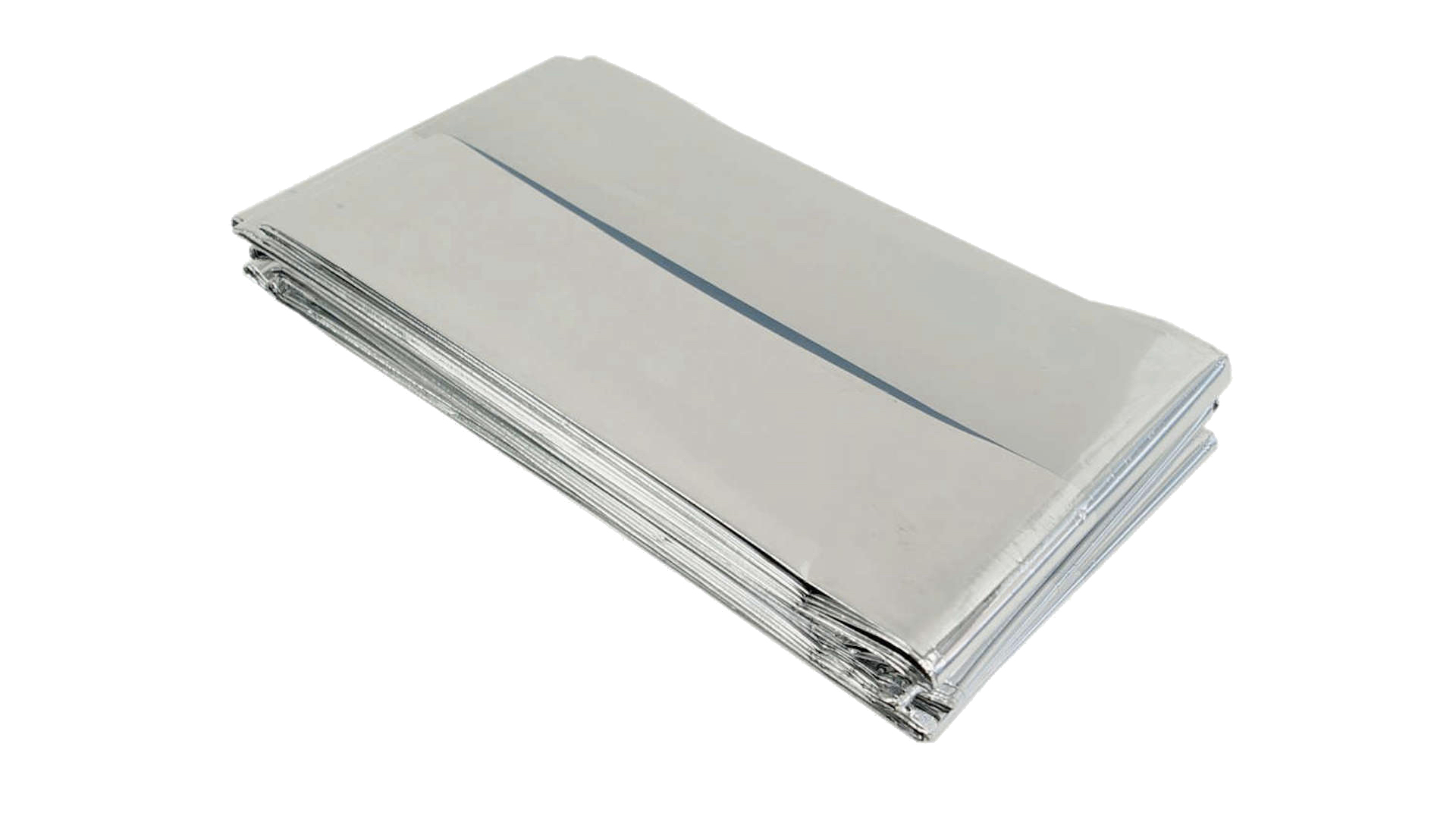
6. Lomo Space Blanket
Our expert review:
Specifications
Reasons to buy
Reasons to avoid
The Lomo space blanket is the cheapest on test and it really is a simple, single sheet. The emergency foil blanket will retain radiated body heat while providing some rudimentary protection from wind and rain.
Because it’s a sheet and not a bag, you can expect areas of the body to still be affected by wind and water, although if you were lying down and you tucked in the blanket around you it does provide good protection and warmth. Our expert reviewer Fiona advises to "ideally, take two – they cost very little and weigh almost nothing".
The foil rustles noisily and the material is thinner and less durable than other products on test. The blanket comes in a throw-away plastic bag and it folds up larger after use than when it first arrives factory packed, but then it is only intended for one use.
The best emergency shelter
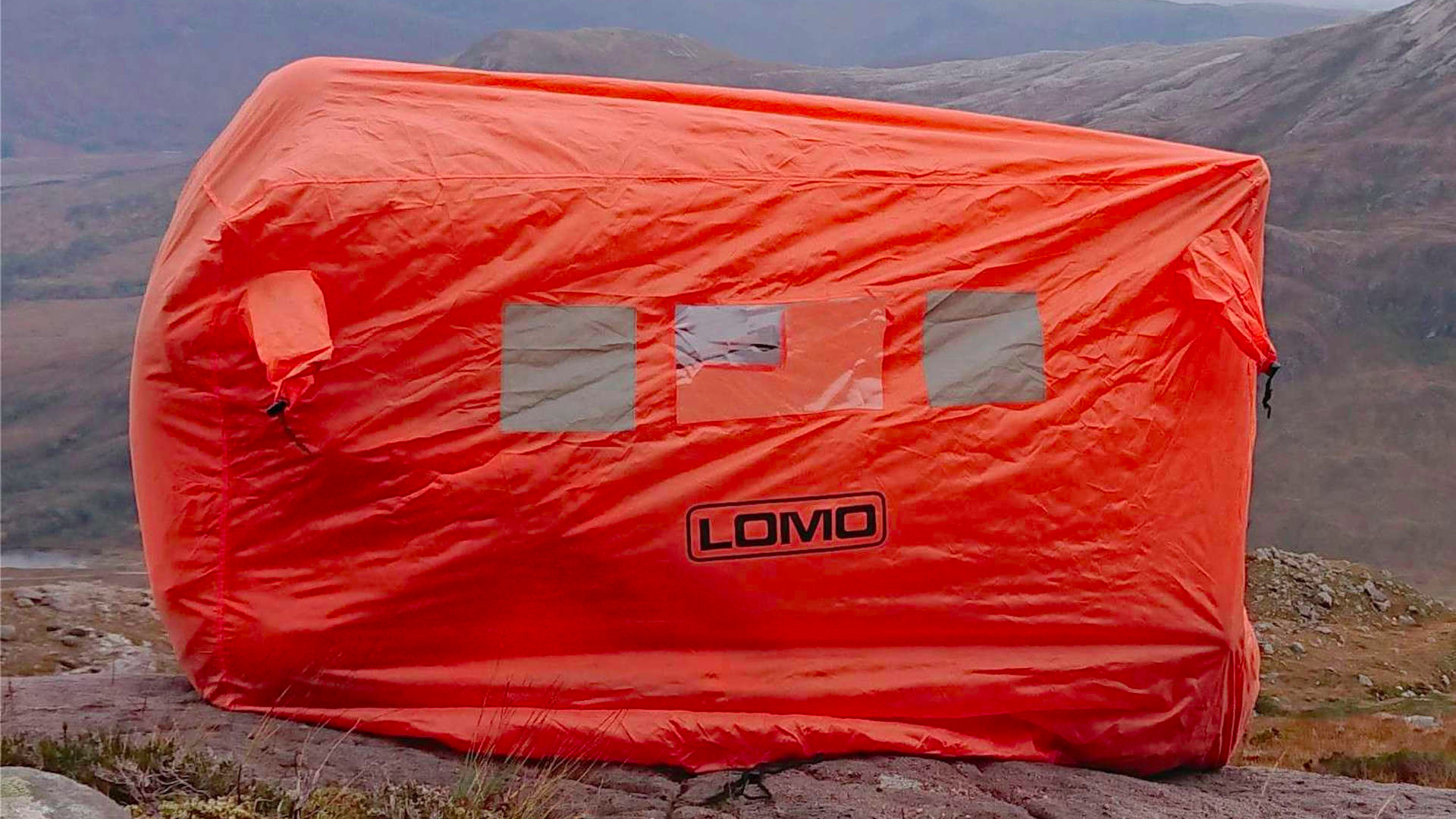
7. Lomo Emergency Storm Shelter
Our expert review:
Specifications
Reasons to buy
Reasons to avoid
This product would fit into our guide to the best bivy sacks as well as this buying guide. It is heavier than the other blankets and bags above, and is made of a nylon material rather than the foil and plastic of other products. However, the fabric makes it durable.
"It's also a versatile item" says our expert reviewer Fiona Russell, "because you can just as easily use it when resting or having a bite to eat during an everyday hike, as well as when required for an emergency." To get inside, one or two and possibly three people pull the shelter over their heads and then sit down. Make sure you have something to sit on, otherwise you’ll get cold underneath.
Heat is quickly generated with all the bodies inside and a windproof fabric keeping the elements out. Air vents help to prevent condensation although it can get a bit damp after a while because of everyone’s breath and body sweat vapor. A useful viewing port allows you a limited view outside, and two reflective panels help emergency crews if they’re trying to find you.
This is a larger and heavier style of shelter and more expensive than others on test but still a good option if you’re looking for a more versatile shelter.
Blankets, bags and shelters comparison table
Emergency kit | List price | Weight (without stuff sack) | Size | Materials |
Lifesystems Heatshield Thermal Bivi Bag | $25 (US on import) / £13.99 (UK) | 107g / 3.75oz | 90cm x 210cm / 35.5in x 82.5in | Metalized low-density polyethylene |
Highlander Emergency Survival Bag | $11.95 / £4.99 | 220g / 7.75oz | 80cm x 90cm / 71in x 35in | Plastic |
SOL Emergency Survival Blanket | $5.29 (US) / £6.95 (UK) | 70g / 2.5oz | 142cm x 213cm / 56in x 84in | Vacuum-metalized polyethylene |
Highlander Thermo Survival Blanket | $22.95 (US) / £16.49 (UK) | 165g / 6oz | 195cm x 140cm / 77in x 55in (in use) / 38cm x 15cm / 15in x 6in (rolled) | Foil coating, EVA foam padding |
Forclaz Single-Use Survival Blanket | $2 (US) / £2.99 (UK) | 60g / 2oz | 16cm x 210cm / 63in x 83in | 92% polyester, 4% resin, 4% aluminum |
Lomo Space Blanket | £0.99 / Currently unavailable in the US | 50g / 1.75oz | 140cm x 210cm / 55in x 83in | Metalized polyester film |
Lomo Emergency Storm Shelter | £19.99 (UK) / Currently unavailable in the US | 396g / 14oz | 130cm x 96cm x 45cm / 51in x 38in x 18in (in use) / 23cm x 10cm / 9in x 4in (packed) | 190T PU-coated polyester, 3000mm hydrostatic head |
How we test blankets, bags and shelters
Our lead tester Fiona Russell lives in Scotland and spends a lot of time running and walking trails, hills and peaks. She always carries one of these products with her. All of the emergency blankets, bags and shelters above have been tested on wild and windy hills and mountains. The tester personally measured the size of the products and weighed them on digital scales. Note that we could find no information about how planet-friendly these products are.
For more details, see how Advnture tests products.
Meet the testers

Fiona is lucky enough to live within easy driving distance of the Scottish Highlands, where she runs the trails and hikes the mountains. She's completed the 282 Munros (the Scottish peaks over 3,000 feet) and unsurprisingly had to deal with her fair share of adverse conditions – perfect for becoming an expert in emergency shelters and the like.

Jasper's love of low-tech, slow adventures has taken him to countless incredible places. As an expert on back to basics survival in the backcountry, he's hugely knowledgable when it comes to lightweight shelters and the like.
How to choose a blanket, bag, or shelter
Low size and weight are the key factors for an emergency item that you will most likely want to carry with you on full- or multi-day backpacking and bikepacking trips, or long trail runs. Small and light options are not always the most warming, though.
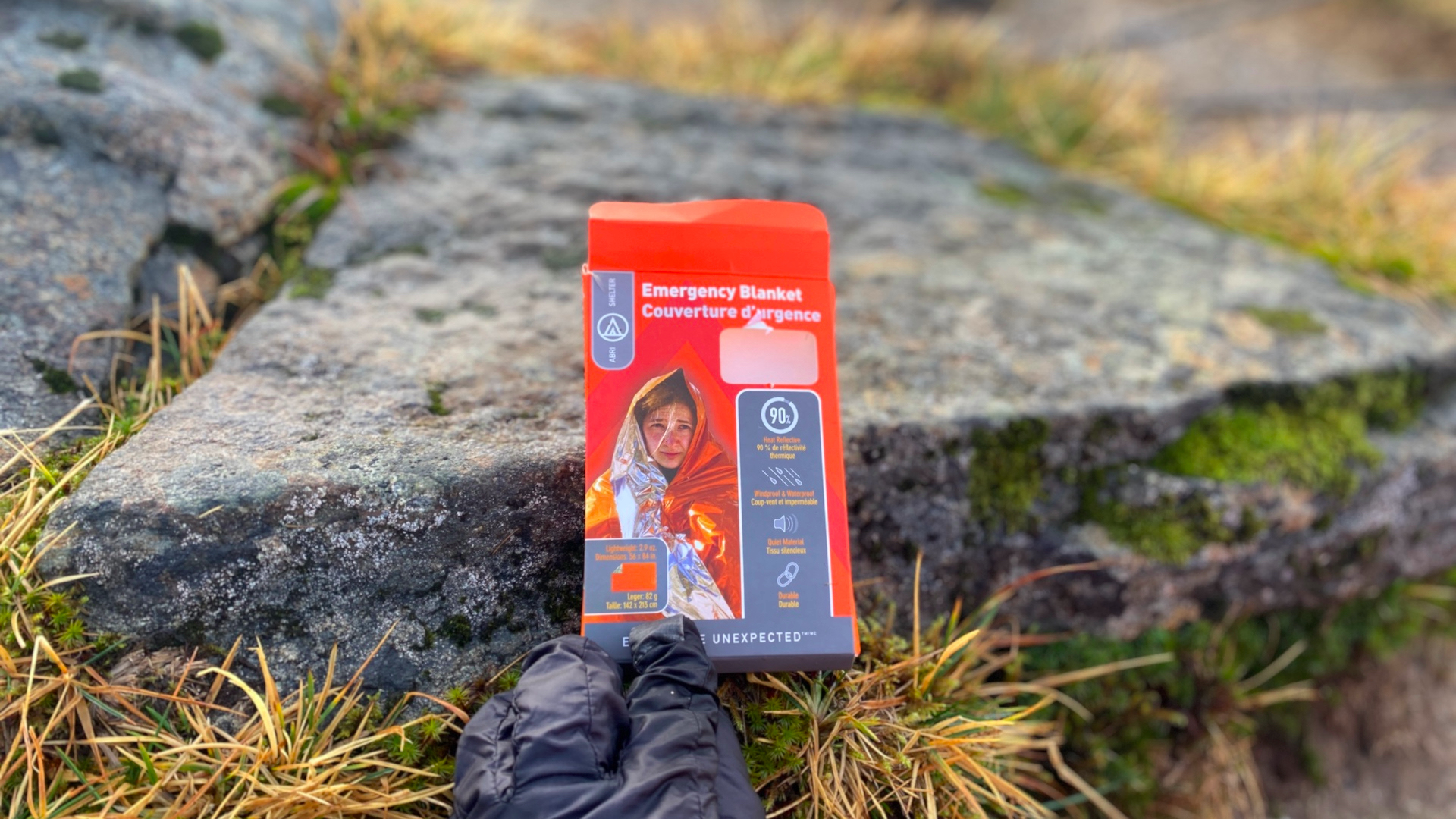
Size vs warmth
Assess the size and weight-to-warmth ratio. It might be that a slightly larger and heavier survival bag will prove to be a great deal more useful in an emergency.
Emergency blanket vs survival bag
Single-sheets are the cheapest and generally the lightest products, but a bag will more easily provide the greatest protection from the outside elements and keep the warmth inside.
A single-sheet blanket works best if you wrap it around you and tuck it in while lying flat, although this shape is not so good for when you are sitting up because coverage is limited. The bag-style emergency products, however, can be used when lying flat or sitting up.

Shelter
It is possible to use emergency blankets and bags as general shelters and as an extra layer when sleeping outdoors, but it’s worth noting that few of these products return to their original neat shape and size once opened.
Moisture
Condensation can be an issue when you warm up inside a foil or plastic bag. Look for seams or air vents, or simply remember to let some air in and out of the top every so often. Condensation will leave you damp and cold after a while.
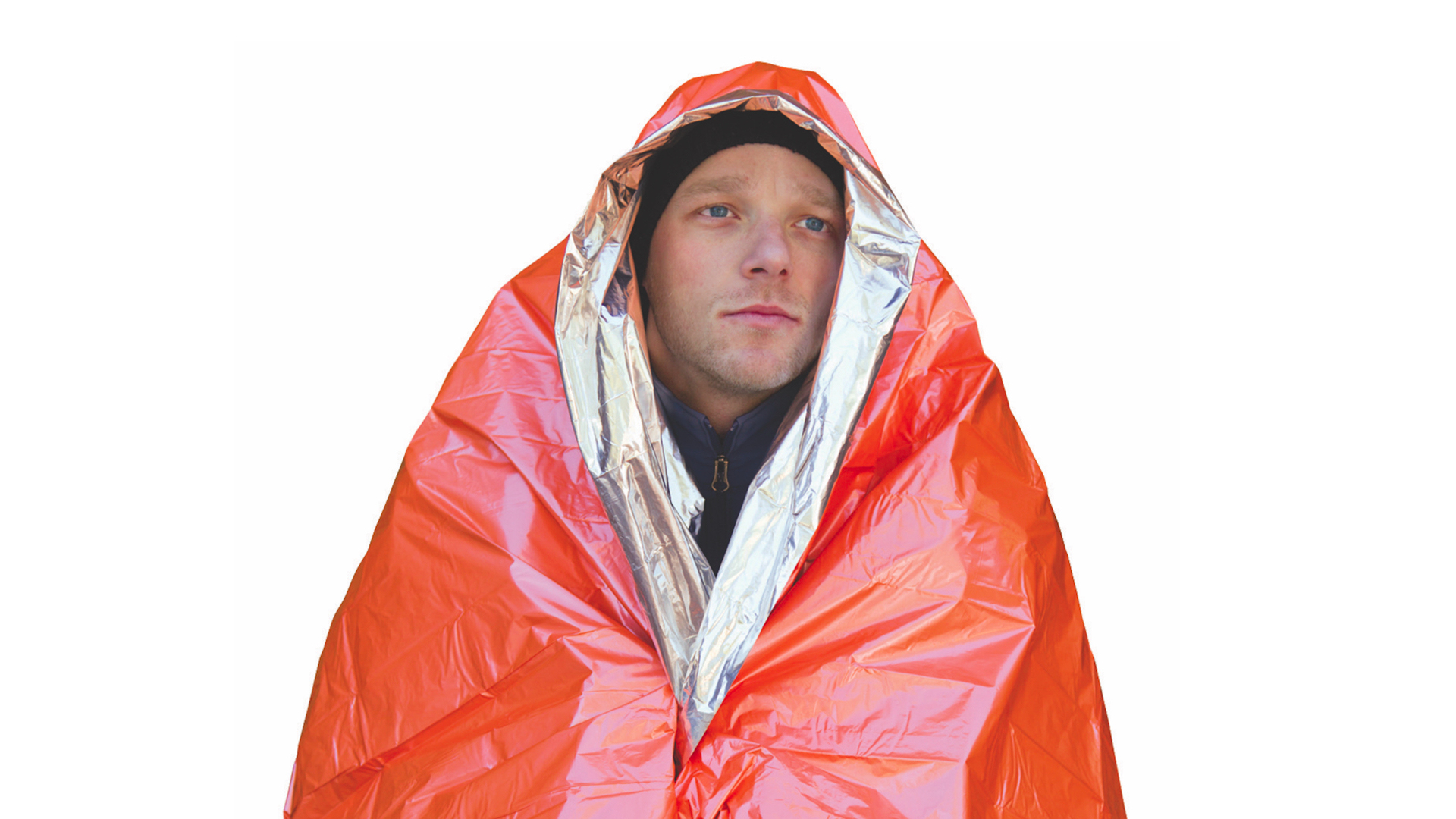
Repeat use
Consider – can you reuse the bag or shelter? It’s useful if you can use the emergency shelter or bag for times when you rest or stop for food during a particularly inclement outing.
Packability
Can you repack the product after use? A stuff sack makes the job of repacking a reusable product much easier and the result will be a more compact package.
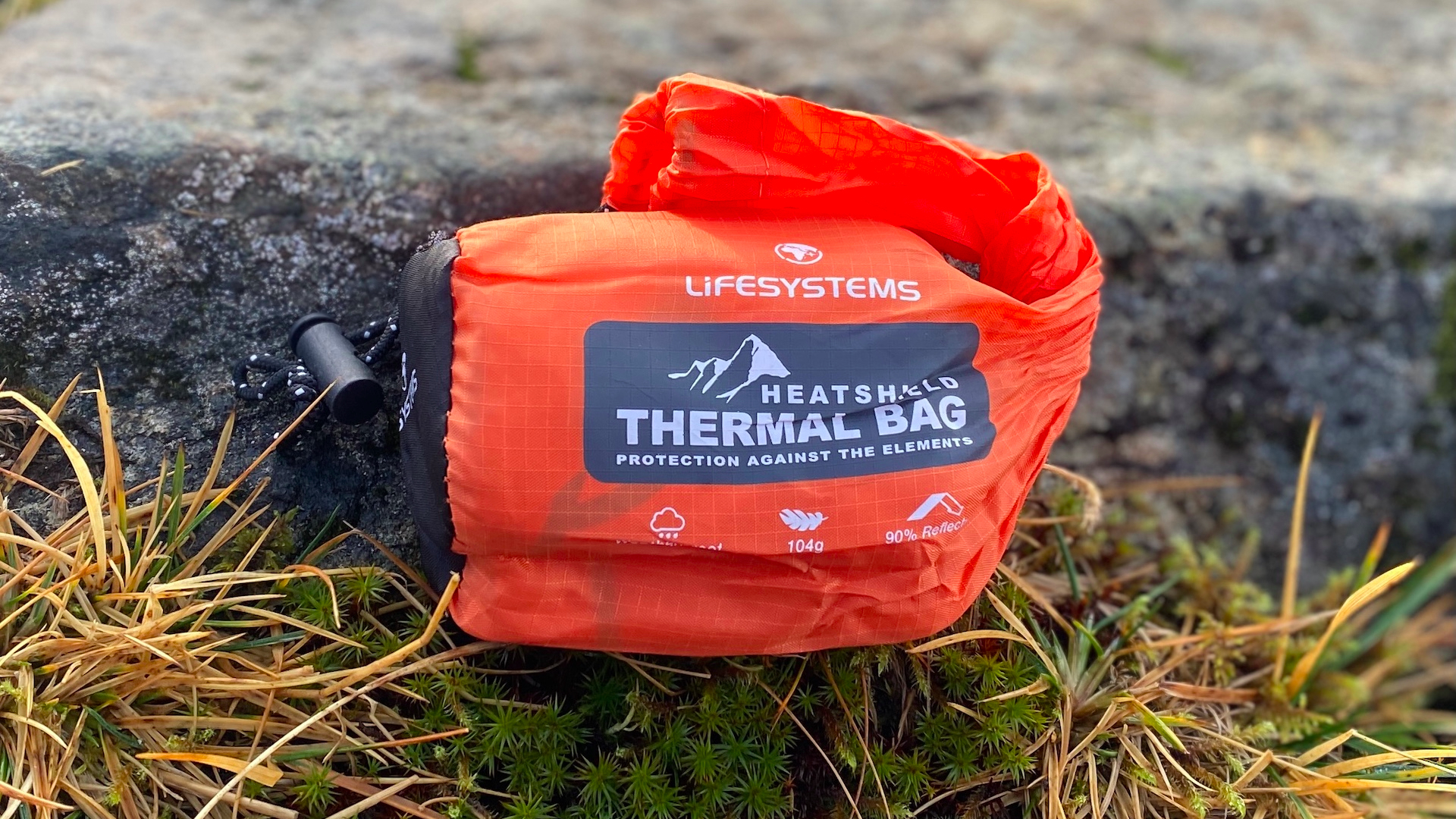
Durability
The thinner foil blankets are unlikely to stand the test of being used several times because they will tear or shred. Look for products that are made of more robust materials.
Noise
Consider how crinkly the shelter, blanket or bag is. This might seem like a small thing if you are simply taking the product in case of an emergency, but you might be stuck inside or under the product for a while. A non-stop rustling in wind could easily become irritating.
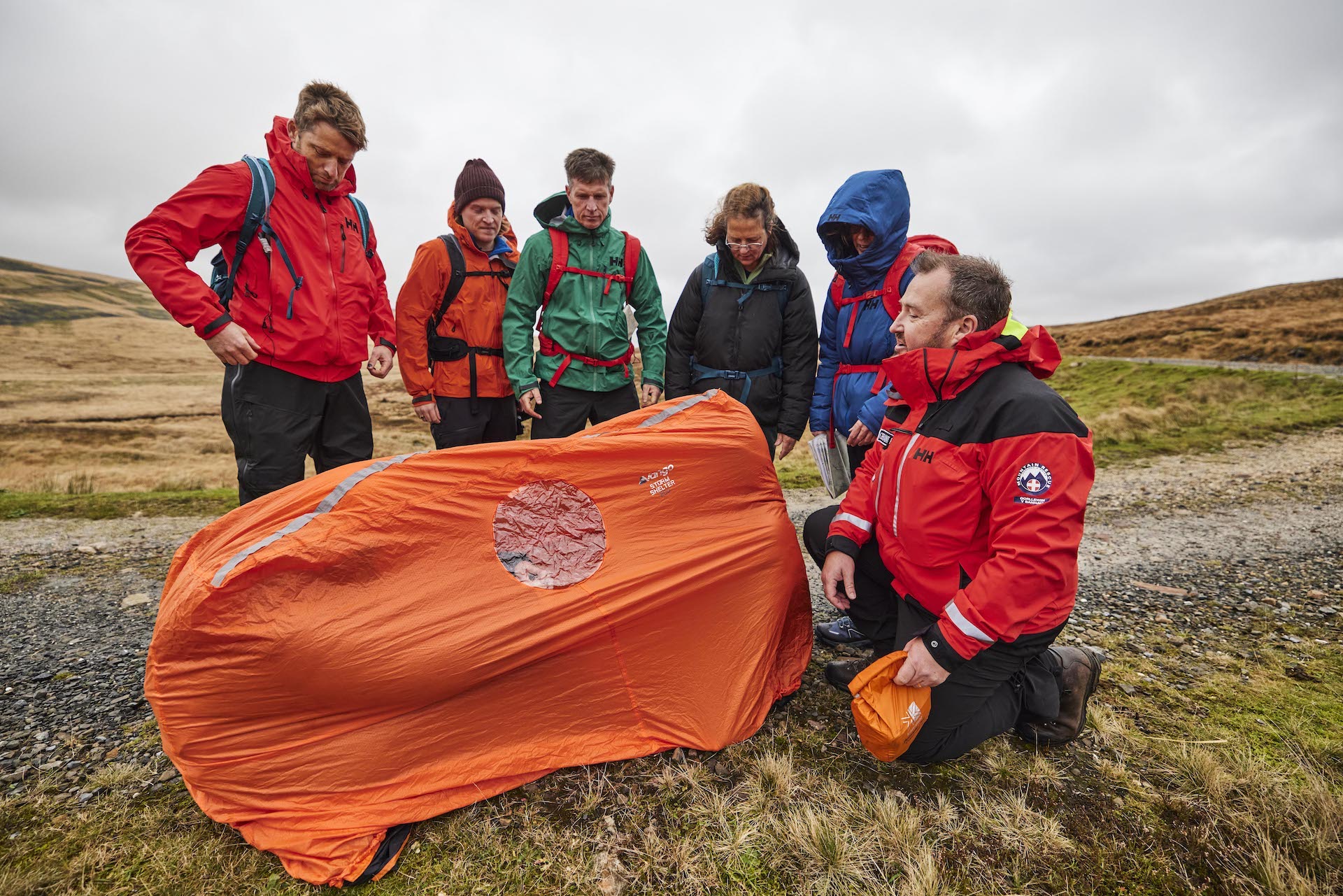
Cost
Most emergency blankets and survival bags are very cheap, and they’re all well worth their price tag if you do need them in an emergency.
Colors
Consider whether the product is brightly colored or has reflective details – both very useful for searchers attempting to find you in an emergency situation, especially in darkness or poor weather.
What to do with your old emergency gear
Sadly emergency blankets, bags and shelters are difficult to recycle, because they're often made of a combination of different materials that aren't easy to process, and most outdoor gear reuse/recycling programs can't accept them.
If there's a hole in your emergency shelter, you could repair it at home rather than replacing the whole thing. Our guide to tent repairs will help you get started.
- Best winter hiking boots: keep your feet dry and warm
All the latest inspiration, tips and guides to help you plan your next Advnture!

Fiona Russell is a widely published adventure journalist and blogger, better known as Fiona Outdoors. She is based in Scotland and is an all-round outdoors enthusiast with favorite activities including trail running, mountain walking, mountain biking, road cycling, triathlon and skiing (both downhill and backcountry). Aside from her own adventures, Fiona's biggest aim is to inspire others to enjoy getting outside and exploring, especially through her writing. She is also rarely seen without a running skort! Find out more at Fiona Outdoors.
